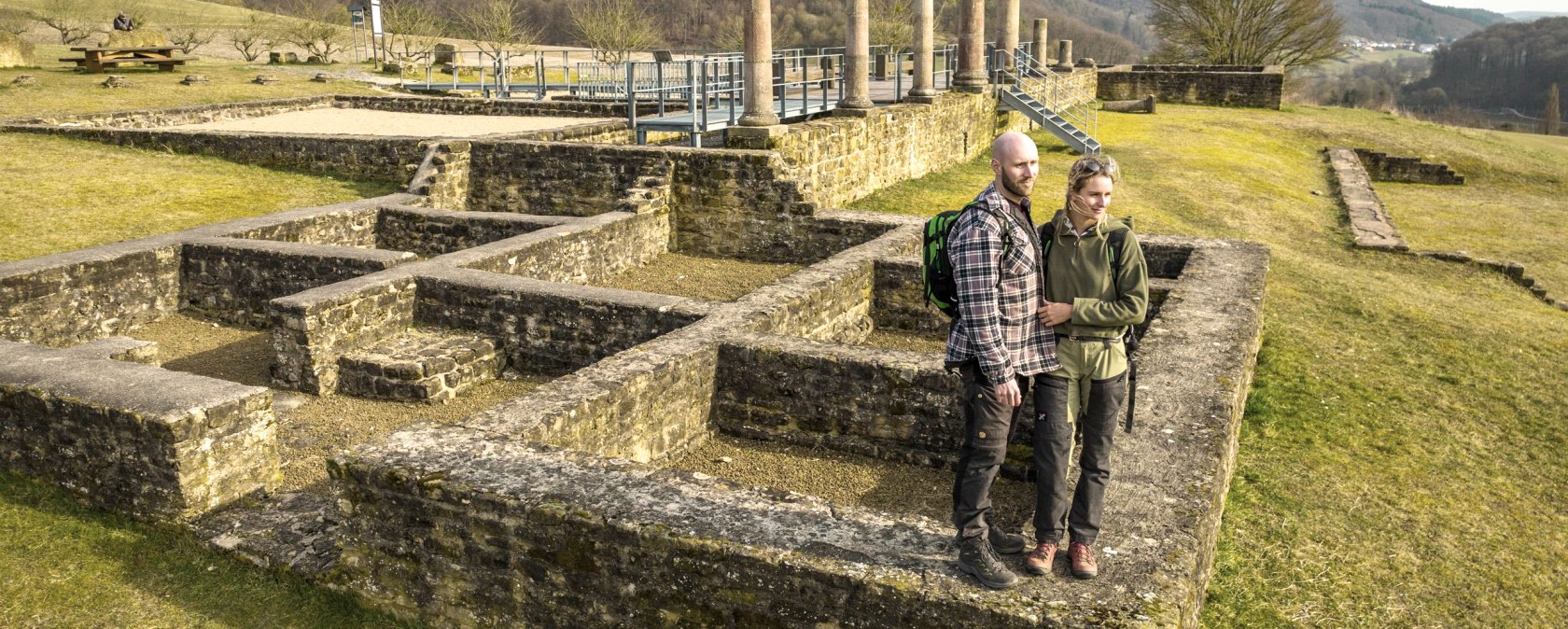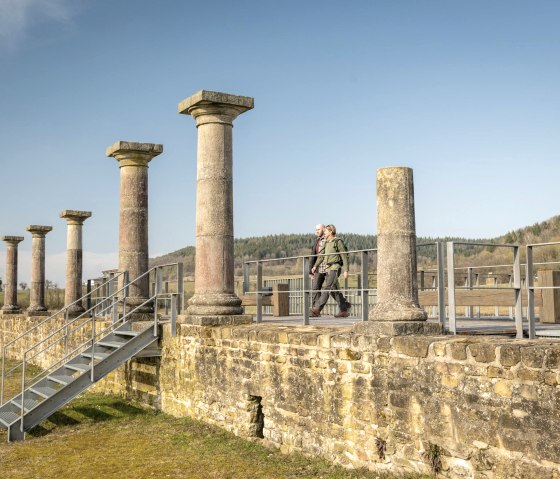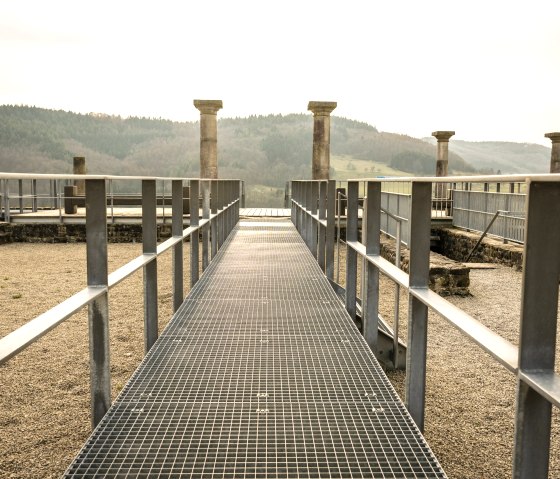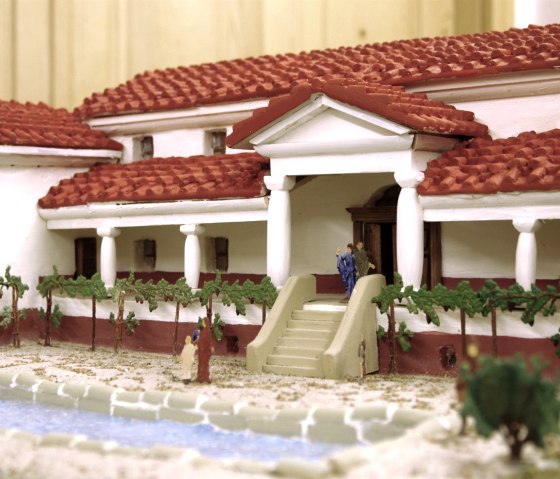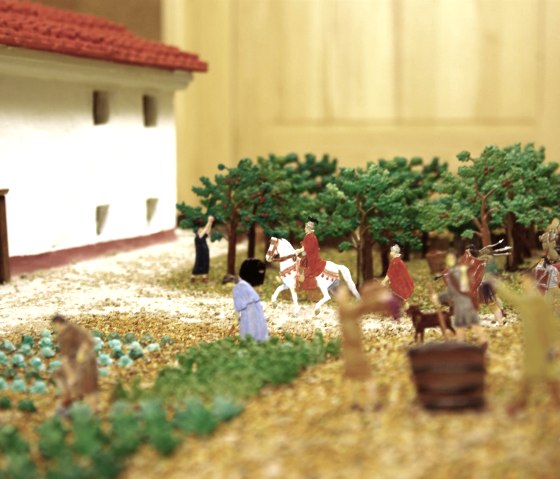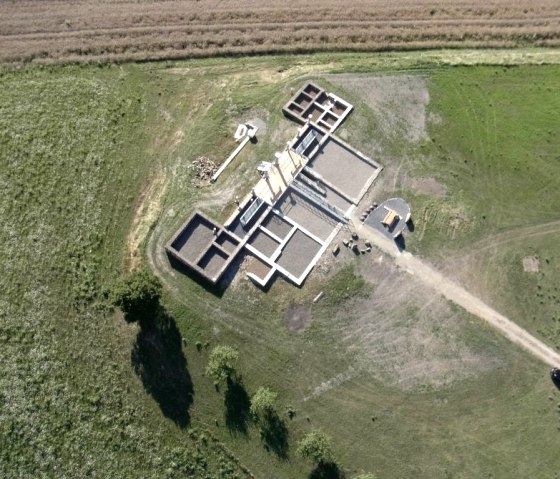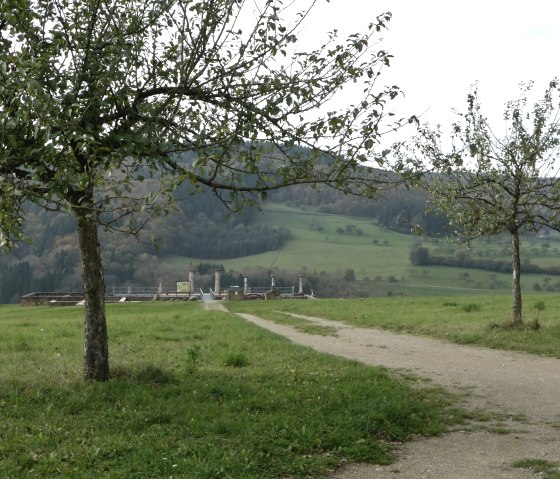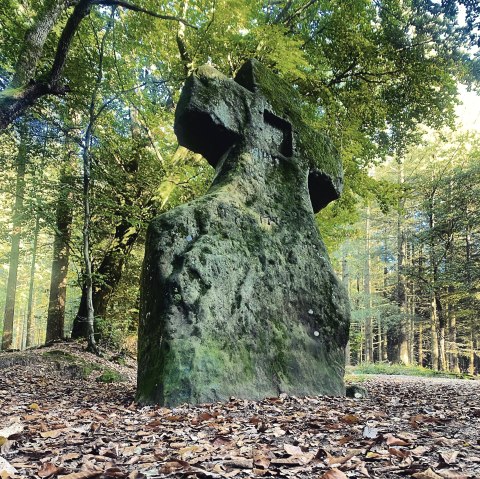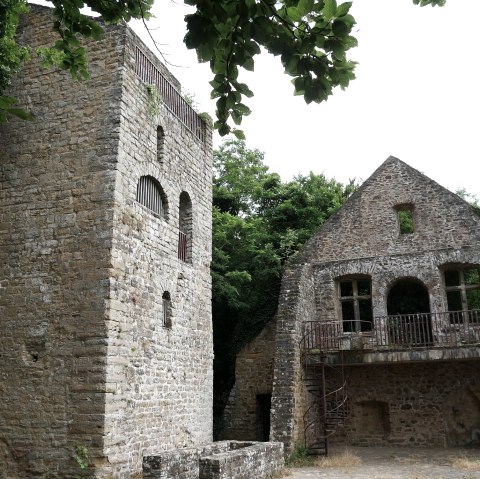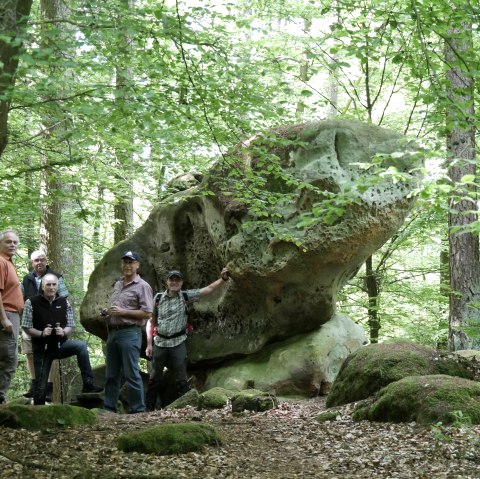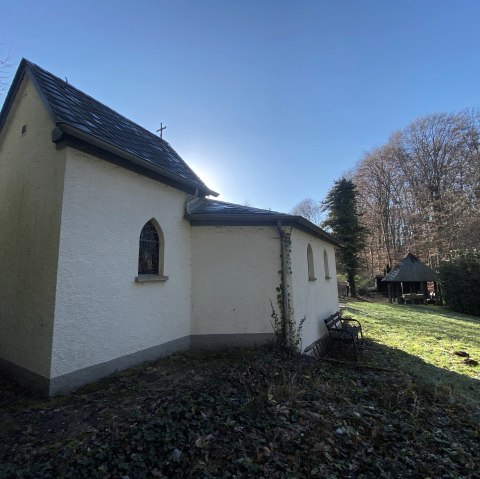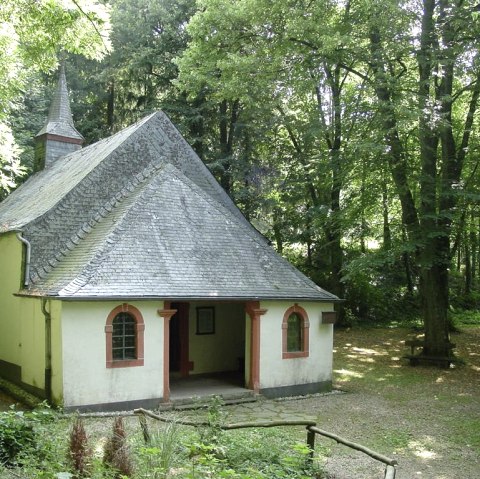Roman villa Holsthum
Holsthum
The Romans usually showed good taste when choosing their building sites and skilfully orientated their residential buildings towards the sun. This was also the case in Holsthum. The pillared front with its large portal was bathed in light from late morning until evening. Anyone entering the symmetrically constructed villa rustica came into a central hall where work was carried out and the farm was run. There was also a small iron forge here, where coins were sometimes minted. Counterfeit money? Probably not. It was probably the officially tolerated production of scarce small change from around 275 A.D. A staircase led from the hall to the cellar, which you can still walk down today - almost 2,000 years later. The hall was adjoined by living and working quarters, with a second storey above. Food was smoked and dried at the back of the house. The bathroom was located in one of the two side extensions.
The estate was definitely not isolated. At least 120 people were buried in two cremation burial grounds.
A stop on the roads of the Romans ("Straße der Römer").
Relive the past:
Get your very own picture of the past: with the free ARGO app, you can view the villa on site in its original size and in 360° view using augmented reality. Download the free ARGO app.
Tip:
- The museum at the Teufelsschlucht Nature Park Centre in Ernzen houses a detailed model of the Villa rustica of Holsthum, built by schoolchildren and enlivened with handmade pewter figures.
- The Roman Villa Holsthum can be visited, for example, on the Holsthum circular route.
Would you like to know more?
The main building of the Roman estate near Holsthum on the slope high above the Prüm was built around 100 AD. The symmetrical floor plan with a columned hall open to the valley and two corner towers at the sides is typical of this period. Surprisingly, the archaeologists found no evidence of a heated living space in the remains of the large house, and it was never remodelled.
The building material for the imposing building, which is over 47 metres wide and almost 24 metres deep, was Luxembourg sandstone from the surrounding area. The walls were plastered and painted: The plinth area was red, the walls above white. The roofs of all parts of the building were covered with tiles. Fragments of coloured interior plaster and window glazing have also been preserved. A staircase led up to the portico and from there to the core building with five rooms. The oven in the corner of the larger main room was obviously not only used for cooking, but also for forging. The staircase to the first floor of the building was located in a room at the back. Barely trodden sandstone steps lead down to the cellar, where the brick pillars that supported a wooden beamed ceiling can still be seen. Niches in the walls were probably used to store lamps or vessels. Behind a barrier of wickerwork in the cellar floor made of tamped earth, special storage goods were probably kept. In the north-west corner tower of the house was the bathing area with all the rooms typical of a Roman bath. At least part of this large house was inhabited until around the middle of the 4th century. It is possible that it was partially destroyed during the Germanic invasions in the 3rd century.
Among the most interesting finds from the area of the villa are thin bronze rods with indentations as well as flat bronze moulds that have not yet been beaten flat. They prove that a small coin workshop existed in Holsthum, where coins were minted from melted bronze objects in times of scarce small change around 275 AD.


